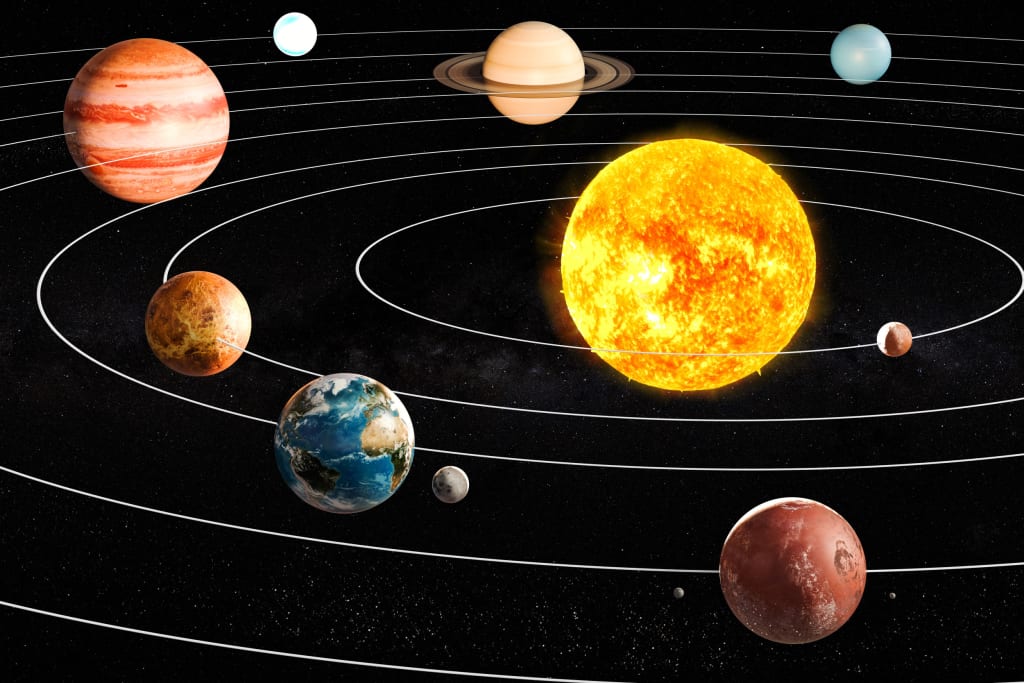
The solar system's age is 4.571 billion years old and the location is in the Milky Way Galaxy. Other than the planets, it consists of dozens of moons, the stars, the sun, and everything bound to it by gravity. Including known dwarf planets such as Pluto, Ceres, Orcus, Haumea, Quaoar, Makemake, Gonggong, Eris and Sedna. And millions of asteroids, meteoroids and comets.
The most important planets and stars are as follows:
Earth
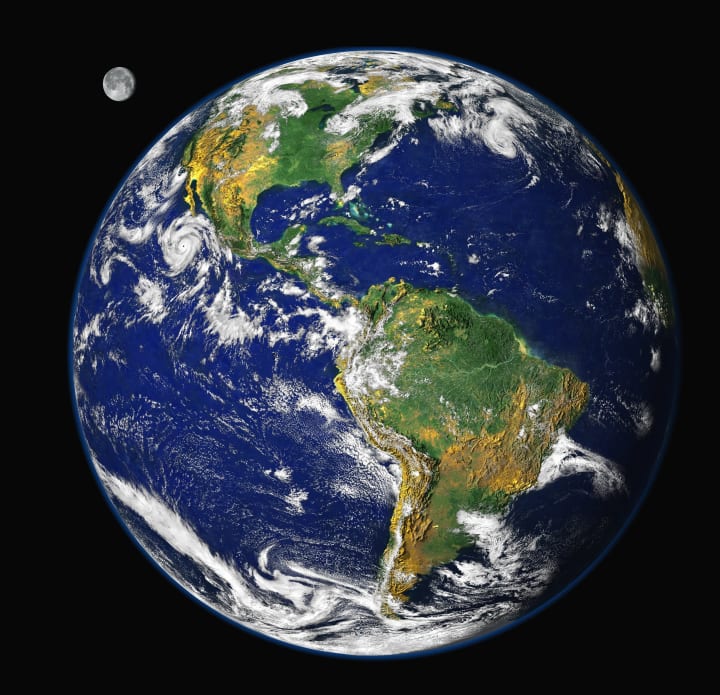
The planet earth is the third planet from the Sun, and the only place known of so far that's inhabited by living beings. While Earth is only the fifth largest planet in the solar system, it is the only world in the solar system with liquid water on the surface.
Radius: 6,371 km
Age: 4.543 billion years
Mass: 5.972 × 10^24 kg
Gravity: 9.807 m/s²
Distance from Sun: 149.6 million km
Population: 7.888 billion (2021) World Bank
Moon: Moon
Sun

The Sun is the star at the center of the Solar System. It is a perfect ball of hot plasma, heated to incandescence by nuclear fusion reactions in its core. The Sun radiates this energy mainly as light, ultraviolet, and infrared radiation, and is the most important source of energy for life on Earth. Without the sun, Earth will destruct!.
Surface temperature: 5,778 K
Mass: 1.989 × 10^30 kg
Distance to Earth: 149.6 million km
Radius: 696,340 km
Age: 4.603 billion years
Density: 1.41 g/cm³
Absolute magnitude: 4.83
Moon

The Moon is Earth's only natural satellite. It is the fifth largest satellite in the Solar System and the largest and most massive relative to its parent planet, with a diameter about one-quarter that of Earth.
Earth has one moon, and there are more than 200 moons in the solar system. Most of the major planets- all except Mercury and Venus have moons.
Distance to Earth: 384,400 km
Radius: 1,737.4 km
Density: 3.34 g/cm³
Age: 4.53 billion years
Orbital period: 27 days
Gravity: 1.62 m/s²
Stars
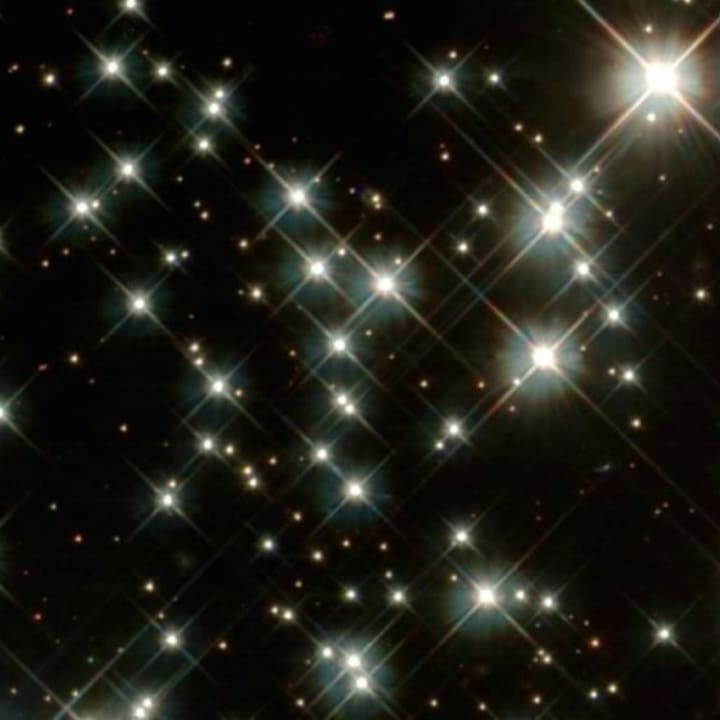
The Milky Way galaxy is just one of the billions of galaxies in the universe. Within it, there are at least 100 billion stars; and on average, each star has at least one planet orbiting it.
Saturn
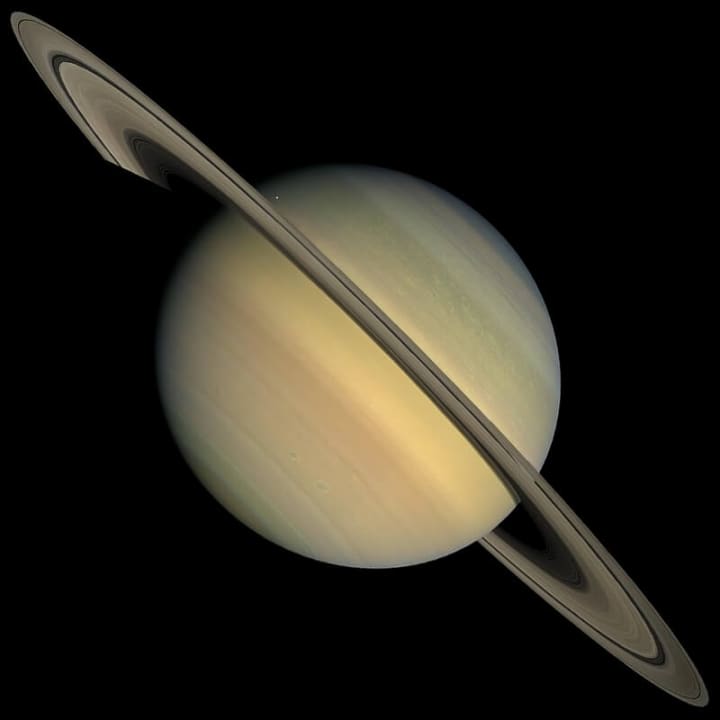
Saturn is the sixth planet from the Sun and the second largest in the Solar System, after Jupiter. It is a gas giant with an average radius of about nine and a half times that of Earth. It has only one-eighth the average density of Earth, but is over 95 times more massive.
Distance from Sun: 1.434 billion km
Orbital period: 29 years
Radius: 58,232 km
Surface area: 42.7 billion km²
Mass: 5.683 × 10^26 kg (95.16 M⊕)
Age: 4.503 billion years
Moons: Titan, Enceladus, Mimas, Dione, Iapetus, Tethys, Hyperion etc...
Jupiter
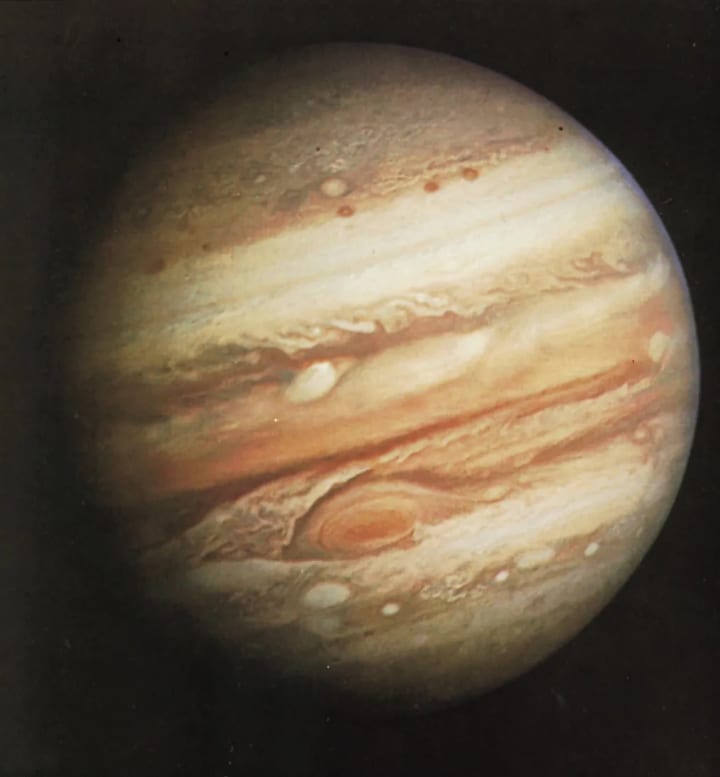
Jupiter is the fifth planet from the Sun and the largest in the Solar System. It is a gas giant with a mass more than two and a half times that of all the other planets in the Solar System combined; while being slightly less than one-thousandth the mass of the Sun.
Distance from Sun: 778.5 million km
Orbital period: 12 years
Radius: 69,911 km
Surface area: 61.42 billion km²
Mass: 1.898 × 10^27 kg (317.8 M⊕)
Coordinates: RA 0h 19m 41s | Dec +0° 49′ 58″
Moons: Europa, Ganymede, Io, Callisto, Amalthea, Adrastea etc...
Mercury
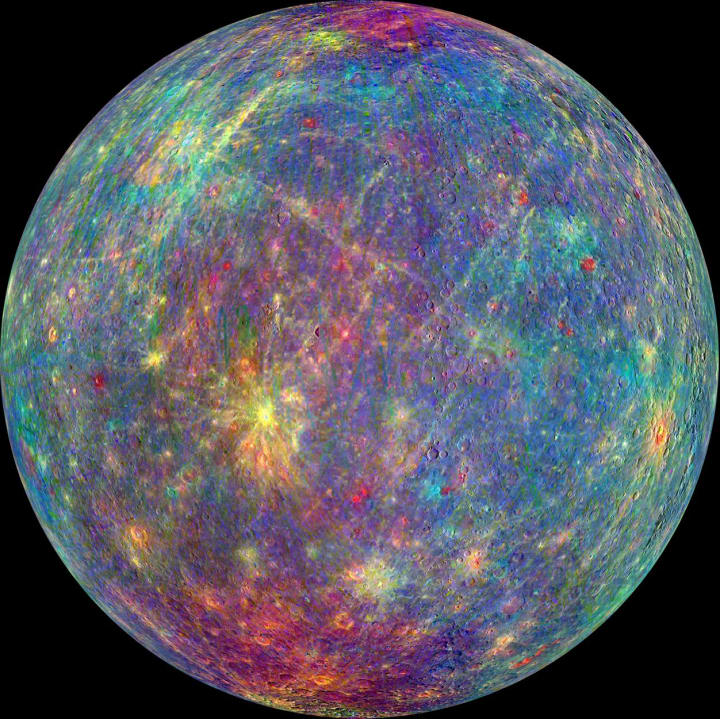
Mercury is the smallest planet in the Solar System and the closest to the Sun. It's orbit around the Sun takes 87.97 Earth days; the shortest of all the Sun's planets.
Distance from Sun: 58 million km
Orbital period: 88 days
Radius: 2,439.7 km
Surface area: 74.8 million km²
Mass: 3.285 × 10^23 kg (0.055 M⊕)
Length of day: 58d 15h 30m
Venus

Venus is the second planet from the Sun. It is sometimes called Earth's "sister" or "twin" planet as it is almost as large and has a similar composition. As an interior planet to Earth, Venus appears in Earth's sky never far from the Sun, either as morning star or evening star.
Distance from Sun: 108.2 million km
Orbital period: 225 days
Radius: 6,051.8 km
Length of day: 243d 0h 0m
Surface area: 460.2 million km²
Mass: 4.867 × 10^24 kg (0.815 M⊕)
Uranus

Uranus is the seventh planet from the Sun. It is named after Greek sky deity Uranus, who in Greek mythology is the father of Cronus, a grandfather of Zeus and great-grandfather of Ares. Uranus has the third-largest planetary radius and fourth-largest planetary mass in the Solar System.
Distance from Sun: 2.871 billion km
Orbital period: 84 years
Radius: 25,362 km
Surface area: 8.083 billion km²
Mass: 8.681 × 10^25 kg (14.54 M⊕)
Length of day: 0d 17h 14m
Moons: Miranda, Titania, Oberon, Umbriel, Ariel, Puck, Cressida etc...
Neptune

Neptune is the eighth planet from the Sun and the farthest known planet in the Solar System. It is the fourth-largest planet in the Solar System by diameter, the third most massive planet, and the densest giant planet. It is 17 times the mass of Earth, and slightly more massive than its near-twin Uranus.
Distance from Sun: 4.495 billion km
Orbital period: 165 years
Radius: 24,622 km
Surface area: 7.618 billion km²
Mass: 1.024 × 10^26 kg (17.15 M⊕)
Length of day: 0d 16h 6m
Moons: Triton, Thalassa, Hippocamp, Nereid, Galatea, Despina etc...
Mars

Mars is the fourth planet from the Sun and the second-smallest planet in the Solar System, only being larger than Mercury. In the English language, Mars is named for the Roman god of war.
Distance from Sun: 227.9 million km
Orbital period: 687 days
Radius: 3,389.5 km
Surface area: 144.8 million km²
Length of day: 1d 0h 37m
Moons: Phobos, Deimos
Pluto

Pluto is a dwarf planet in the Kuiper belt, a ring of bodies beyond the orbit of Neptune. It is the ninth-largest and tenth-most-massive known object to directly orbit the Sun. It is the largest known trans-Neptunian object by volume, by a small margin, but is slightly less massive than Eris. Pluto used yo be a planet in the solar system but has been banished because of it's tiny size.
Radius: 1,188.3 km
Orbital period: 248 years
Density: 1.88 g/cm³
Rotation: 6.4 days
Discovery site: Lowell Observatory
Moons: Charon, Nix, Styx, Kerberos, Hydra
About the Creator
Seni Haks
I'm Seni I'm a former copywriter and currently a published freelance journalist. My hobbies to the side is dancing and drawing.






Comments
There are no comments for this story
Be the first to respond and start the conversation.